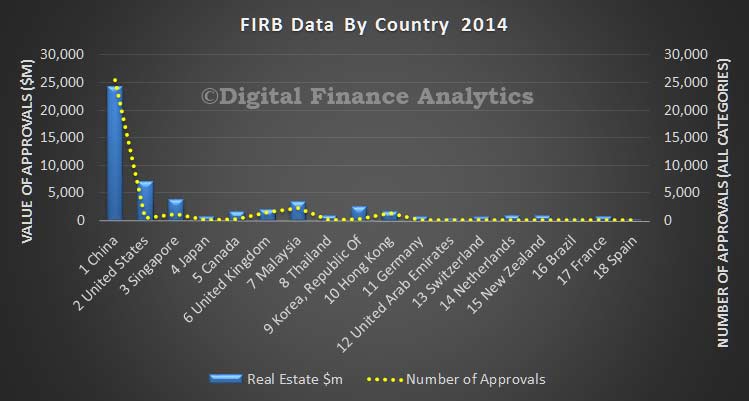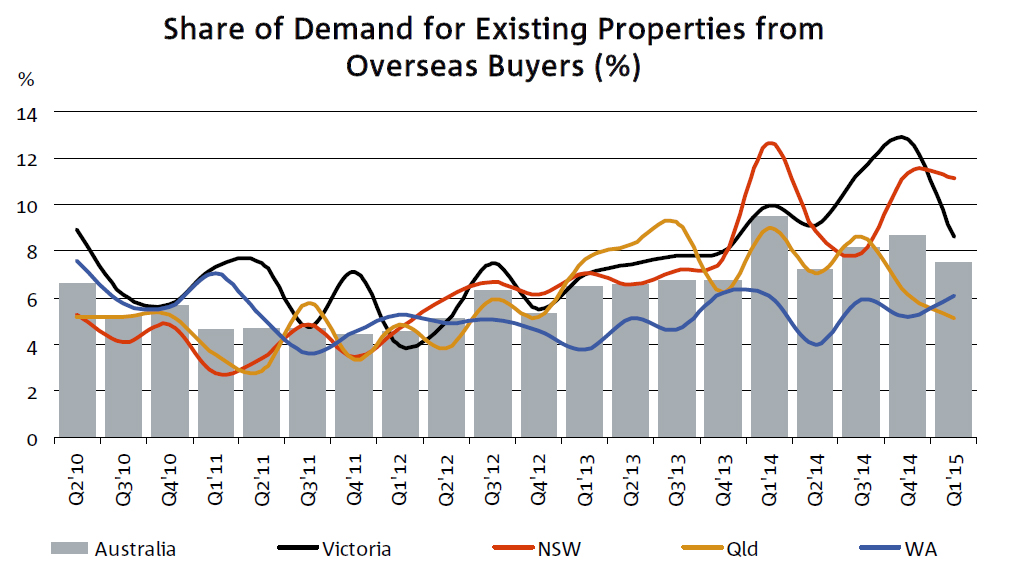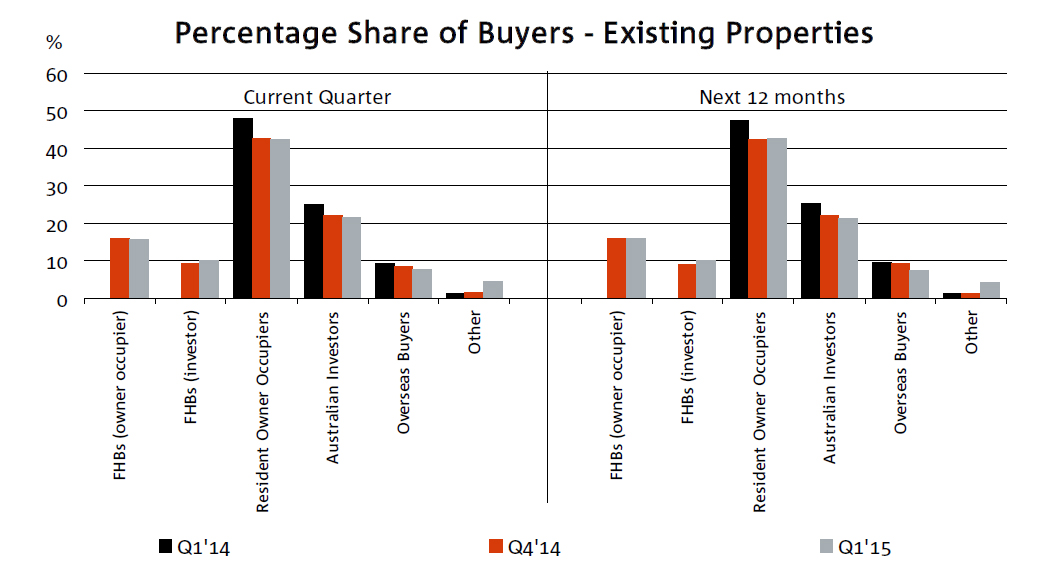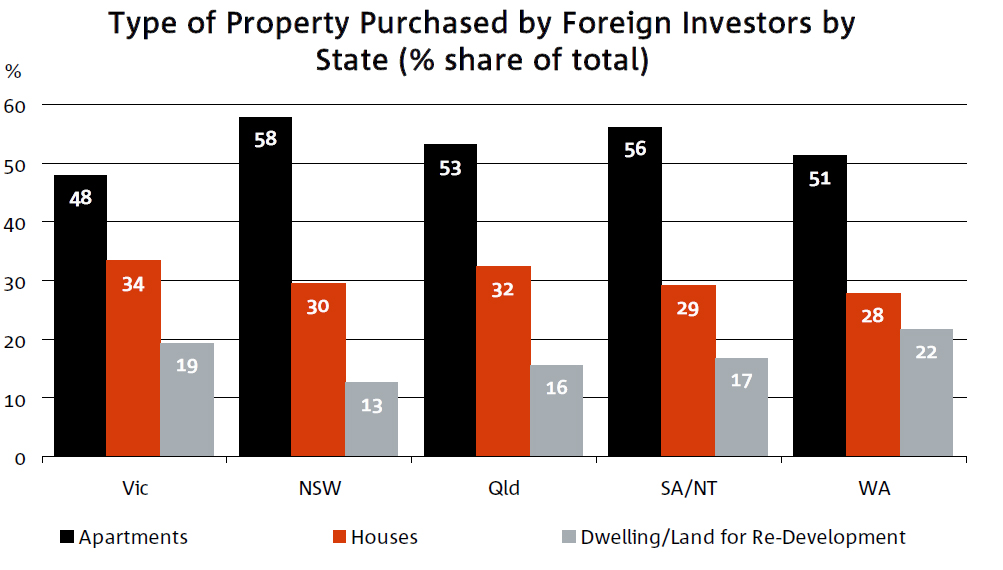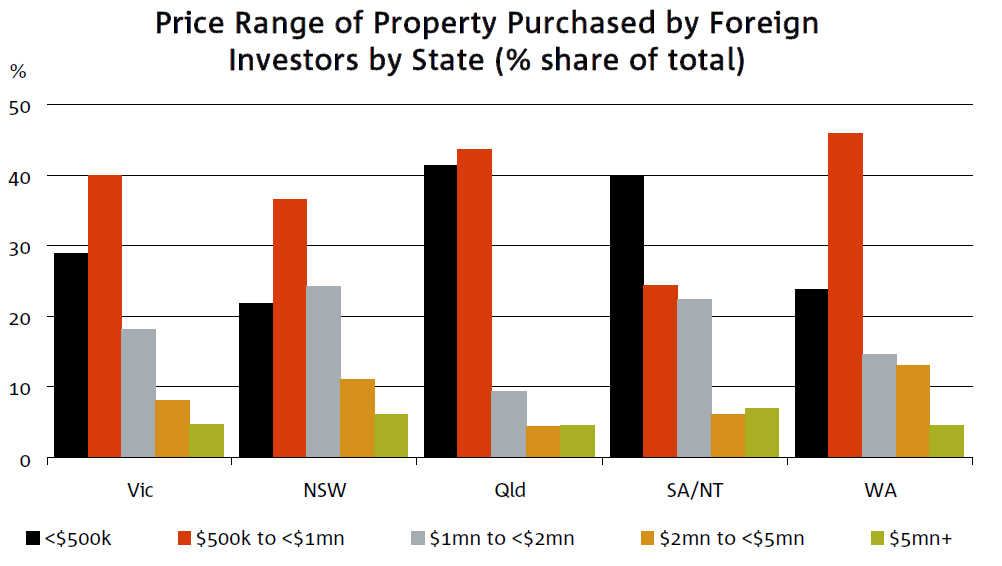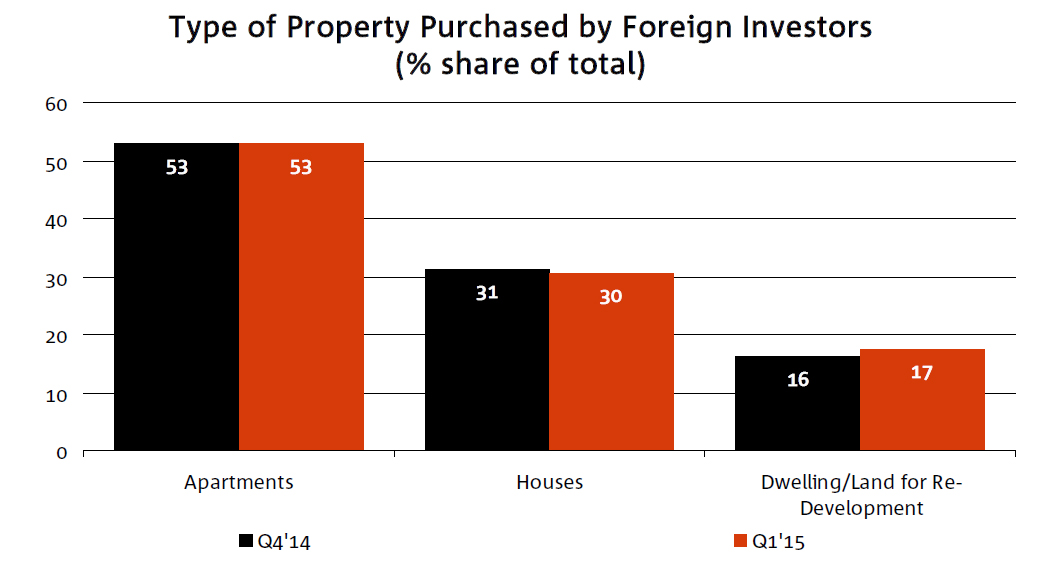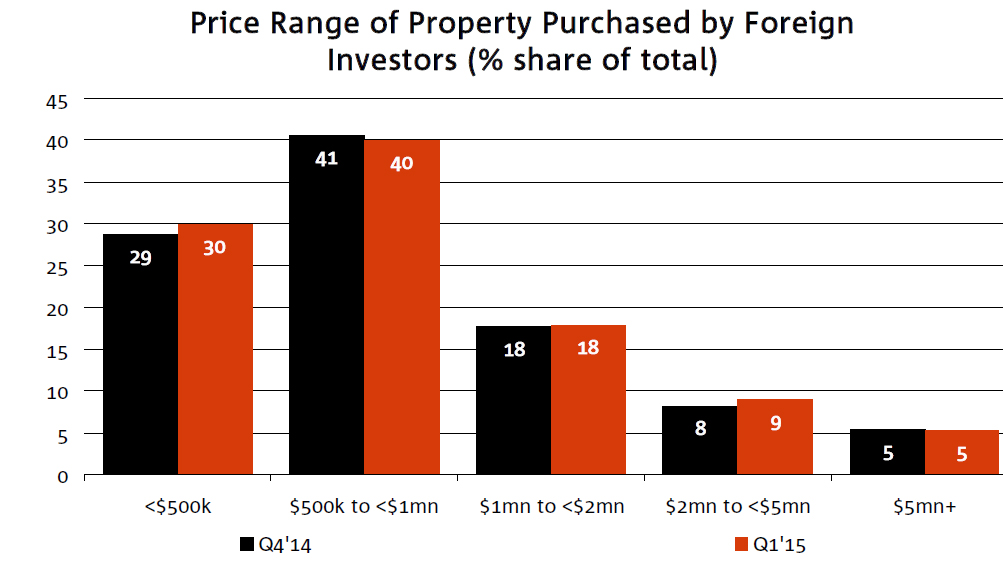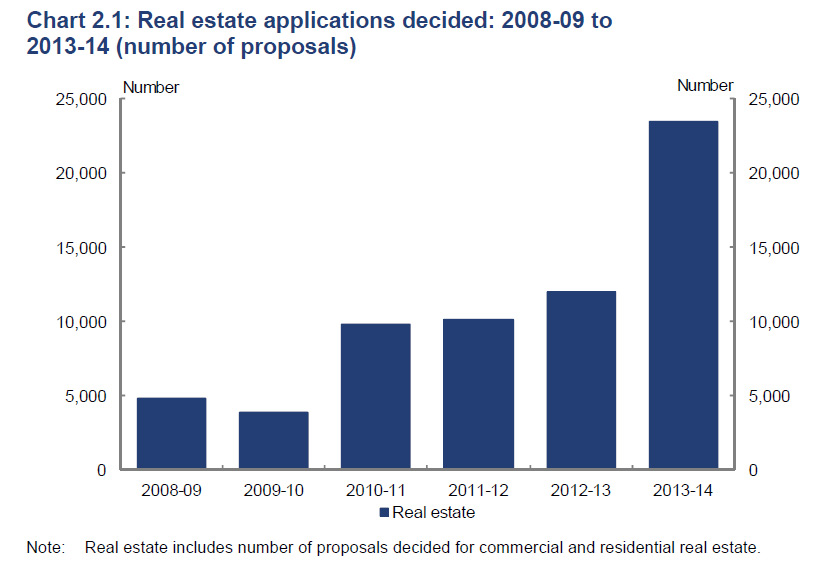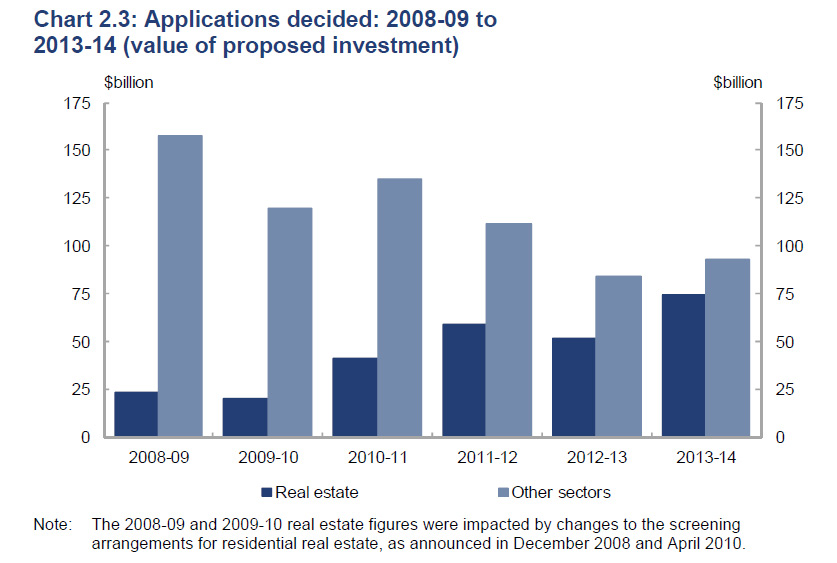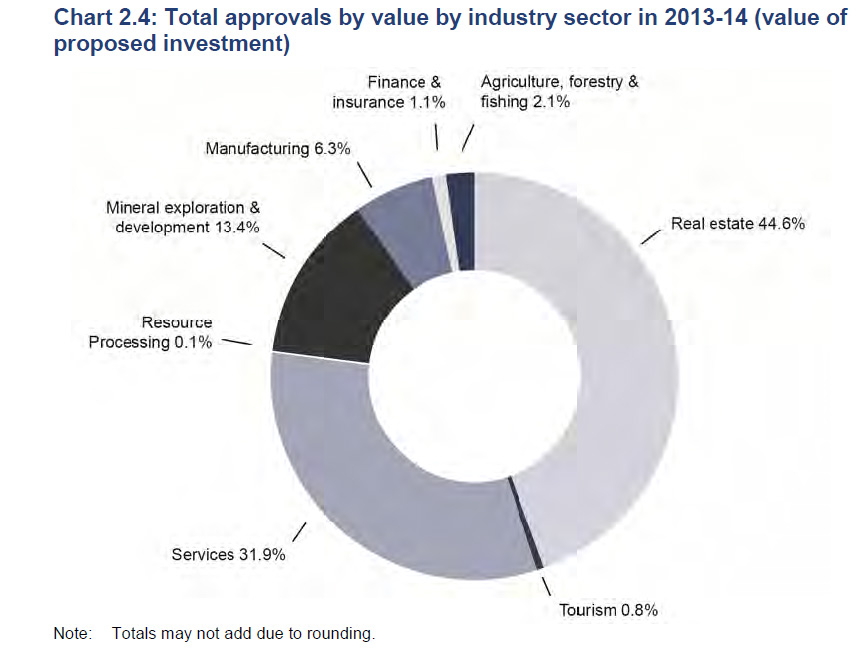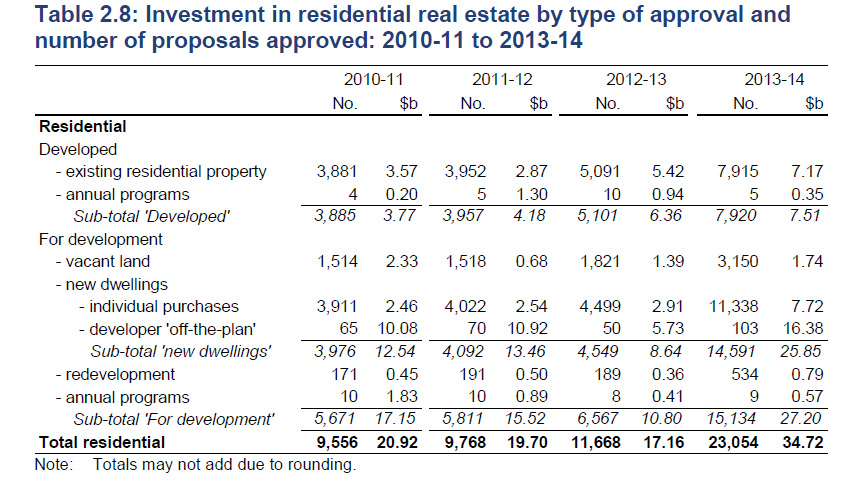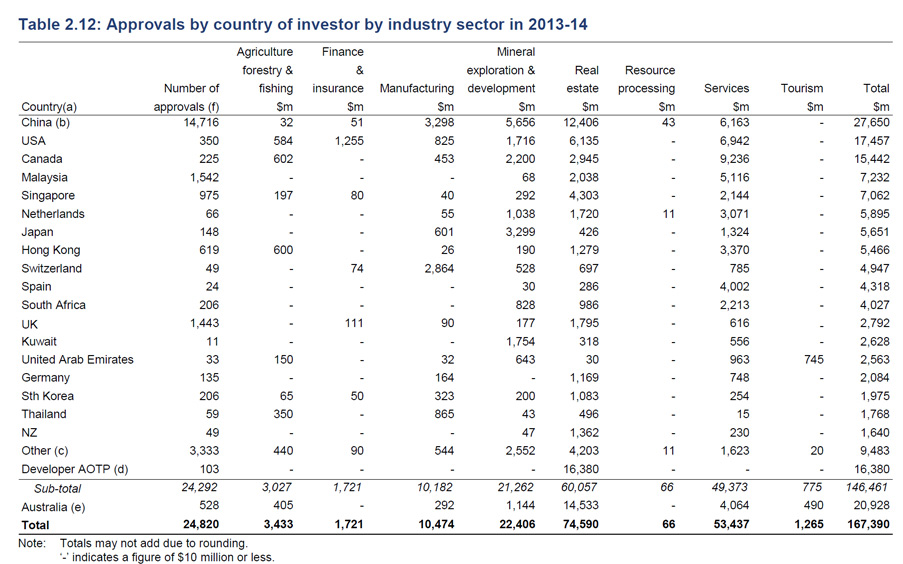The vexed question of how many foreign buyers are in the Australian residential property market, continues. The Master Builders of Australia estimated that foreign investors account for 5 to 6 per cent of the Australian housing market. Meriton said overseas buyers represented closer to 2.5 per cent of annual sales. The Foreign Investment Review Board figures show for the year from July 2013, $24.8 billion in foreign investment was approved, 44% higher than the prior year. But no one really knows. The FIRB data does not jive, the mortgage lending data does not take account of foreign funding, and we know that the current approval processes are being flouted – see the recent parliamentary review. There is no good source of truth. Here at DFA, we like a challenge, so we turned our household surveys to the problem.
DFA recently highlighted data from our first time buyer surveys, which showed that about 4% of all first time buyers and 9.2% of investor first time buyers were overseas, which is more than enough to more than move the dial, especially given the concentration in Sydney.
We have been looking at the data in our broader survey, and we have been able to make an estimation of the penetration of foreign buyers by post code. In this more extensive data set, we look beyond the mortgage, (as many fund from overseas) to the question of ownership. From our survey, we can draw some relevant conclusions. First, we think that of the nearly $6 trillion of residential real estate in Australia, certainly more than 5% is owned by overseas buyers, which is worth more than $300 billion in today’s terms. More than half of the property is in Sydney, a quarter in Melbourne, and the rest spread across the other states.
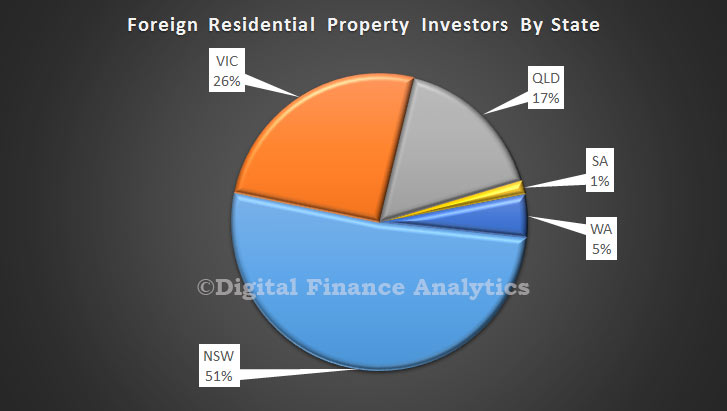 However, one of the most interesting elements in the data is the concentration in specific post codes. We have geo-mapped the data for some of the major centres. In Sydney, the hot spots were Millers Point, Surry Hills, Hurstville and the inner East. The average purchase price was around $400,000 and was most likely a unit (some purchased some time back, when prices were lower than today). Actual prices ranged from more than $1m, down to below $250k. Almost none of the properties were mortgaged to an Australian bank. In these contested areas, prices will be pushed higher.
However, one of the most interesting elements in the data is the concentration in specific post codes. We have geo-mapped the data for some of the major centres. In Sydney, the hot spots were Millers Point, Surry Hills, Hurstville and the inner East. The average purchase price was around $400,000 and was most likely a unit (some purchased some time back, when prices were lower than today). Actual prices ranged from more than $1m, down to below $250k. Almost none of the properties were mortgaged to an Australian bank. In these contested areas, prices will be pushed higher.
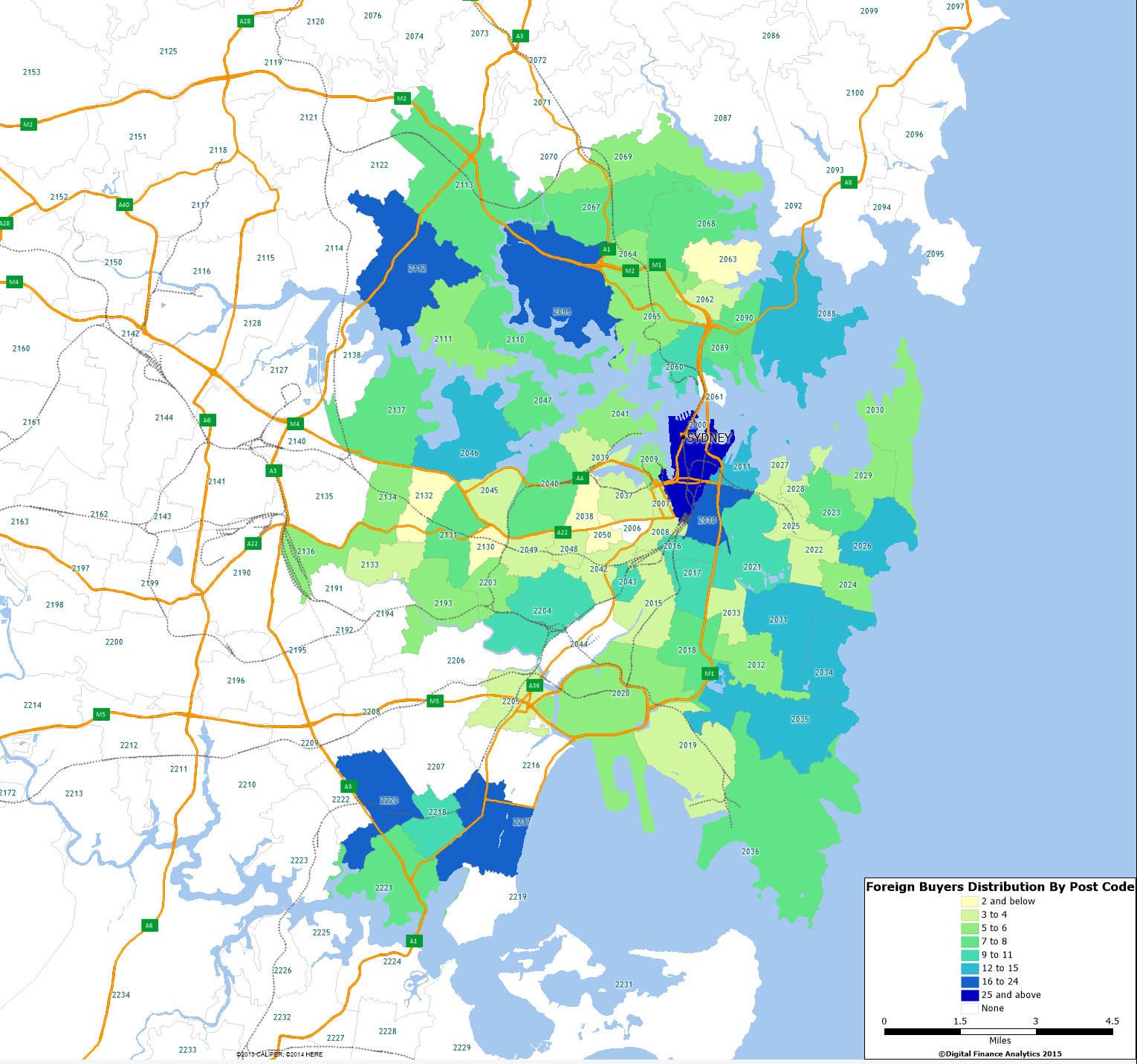 In Brisbane, the hot spots were McDowall, Oxley (Qld), East Brisbane, Fortitude Valley and Wavell Heights. The average price was $325,000, with again a focus on units.
In Brisbane, the hot spots were McDowall, Oxley (Qld), East Brisbane, Fortitude Valley and Wavell Heights. The average price was $325,000, with again a focus on units.
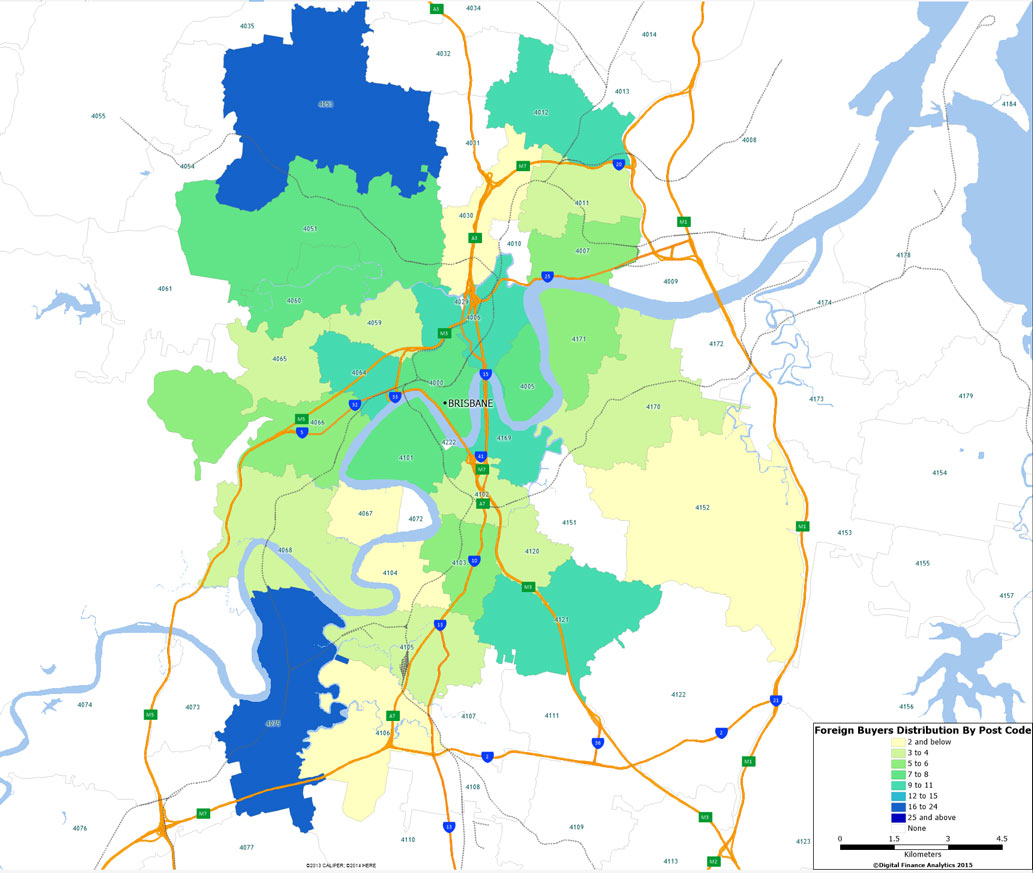 In the west, in Perth, the favoured areas were Mount Claremont, Nedlands, Subiaco and East Perth. Average price was $497,000 and a larger proportion of purchases were houses than in the eastern states.
In the west, in Perth, the favoured areas were Mount Claremont, Nedlands, Subiaco and East Perth. Average price was $497,000 and a larger proportion of purchases were houses than in the eastern states.
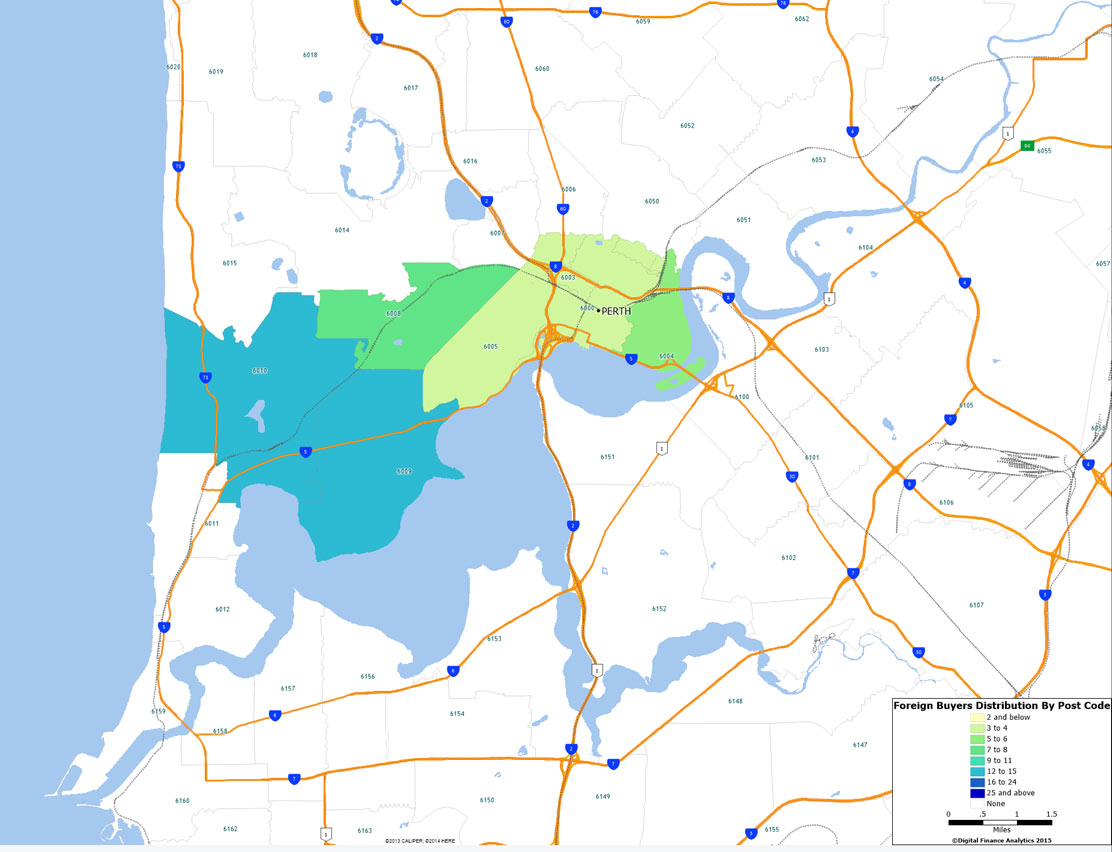 In Melbourne, favoured areas included Hawthorn, Melbourne, Maribyrnong, Brunswick, Kew, Richmond, Footscray, Fitzroy and St Kilda. Average value was $312,000, and was biased towards units.
In Melbourne, favoured areas included Hawthorn, Melbourne, Maribyrnong, Brunswick, Kew, Richmond, Footscray, Fitzroy and St Kilda. Average value was $312,000, and was biased towards units.
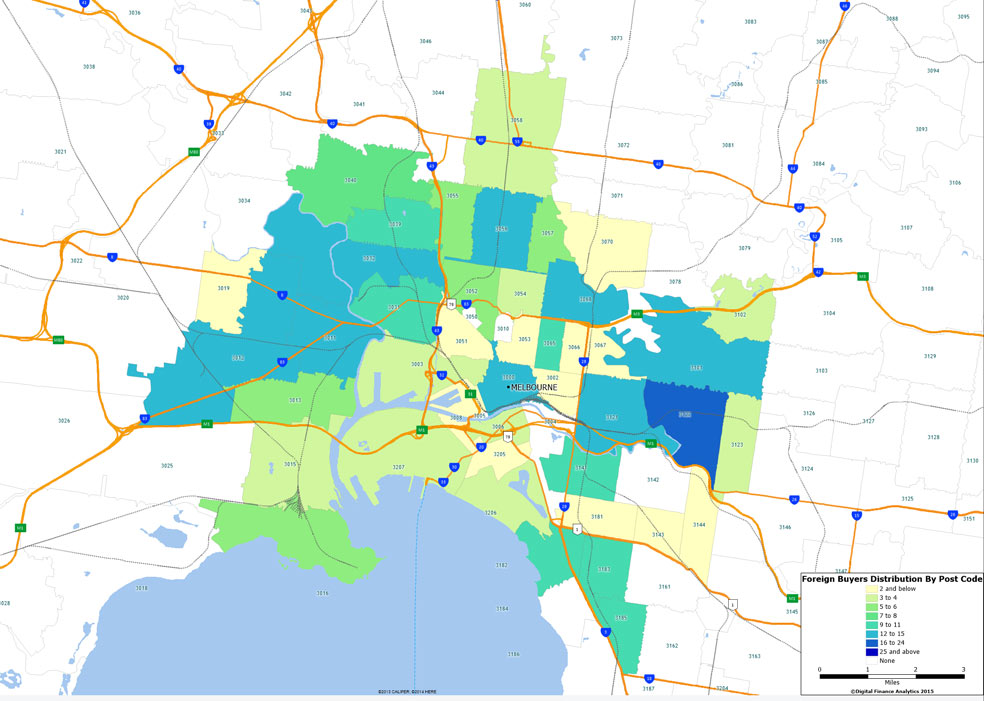
Finally, in Canberra, the average was $580,000.
We can drawn some general conclusions. The argument that most overseas buyers are buying multi-million dollar properties so there is no contention with first time buyers will not wash. They are competing for similar properties. Many are temporarily in Australia, but are using money from foreign sources, often family funds. Next, they are buying in areas adjacent to the CBD and are happy to purchase high density units (many will be familiar with this style of living from their own cities). These are also the targets of onshore investors, another reason why prices are rising. Finally, we found that many were looking to hold the property for capital growth (rather than rental income). About one fifth of the property was currently vacant. This hints at a worrying trend, are some investors just letting the property stand idle and empty? What does this do to the area, and other units in the block. Is there a case for an occupancy test? Given the rise in the number of property inactive Australians and the rise in people wanting to rent, is there a way to make these vacant properties more accessible to potential tenants?
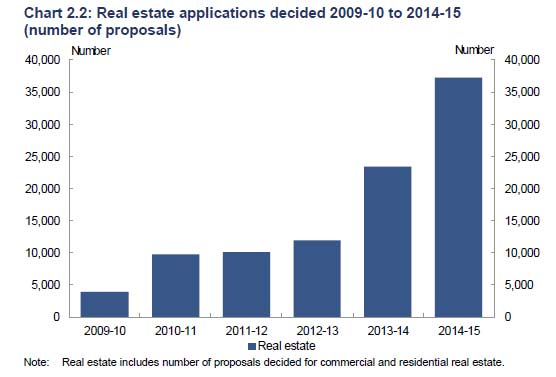 Approved investment in real estate (comprising commercial and residential proposals) was $96.9 billion in 2014-15 (compared with $74.6 billion in 2013-14). Residential approvals rose from $34.7 billion in 2013-14 to $60.75, of which $49.25 billion were for development.
Approved investment in real estate (comprising commercial and residential proposals) was $96.9 billion in 2014-15 (compared with $74.6 billion in 2013-14). Residential approvals rose from $34.7 billion in 2013-14 to $60.75, of which $49.25 billion were for development.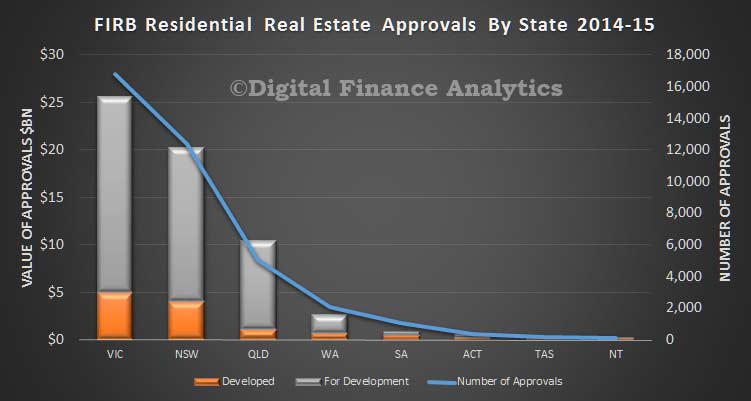 The FIRB report includes a state analysis by type of development
The FIRB report includes a state analysis by type of development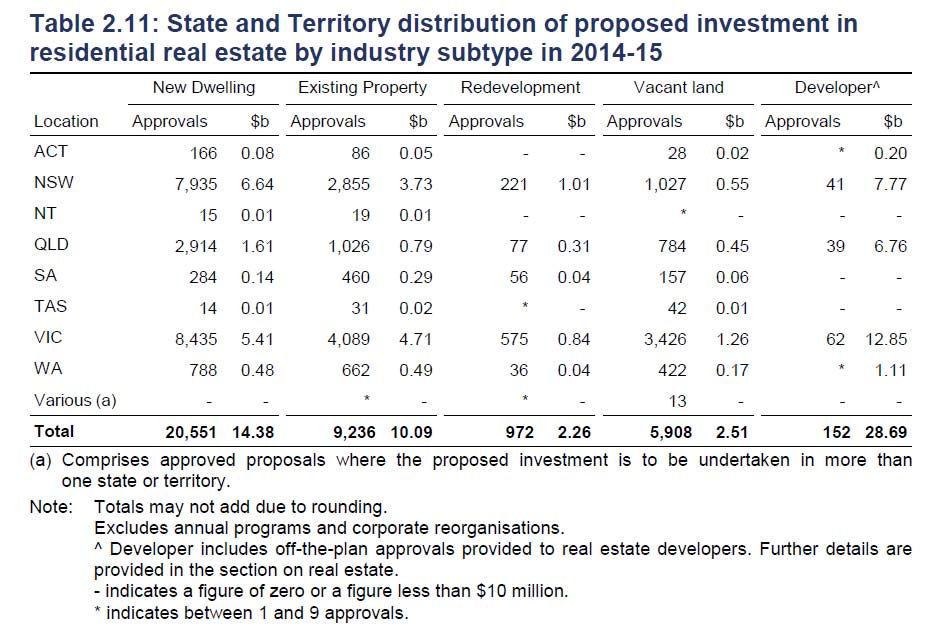 Our analysis shows the largest proportion of new dwelling approvals in NSW, compared with VIC and QLD. On the other hand, VIC had the highest proportion of existing property and vacant land approvals.
Our analysis shows the largest proportion of new dwelling approvals in NSW, compared with VIC and QLD. On the other hand, VIC had the highest proportion of existing property and vacant land approvals.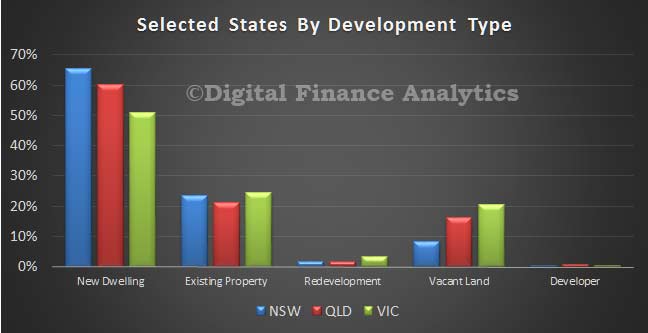 The Country data provided by the FIRB report does not separate residential real estate from commercial property. That said, the data shows China as the largest investor, based on number of approvals and value. In the previous year, China originated 14,716 approvals, compared with 25,431 in 2014-15 overall, whilst real estate was worth $12.4 billion in 2013-14 compared with $24.3 billion in 2014-15.
The Country data provided by the FIRB report does not separate residential real estate from commercial property. That said, the data shows China as the largest investor, based on number of approvals and value. In the previous year, China originated 14,716 approvals, compared with 25,431 in 2014-15 overall, whilst real estate was worth $12.4 billion in 2013-14 compared with $24.3 billion in 2014-15.
